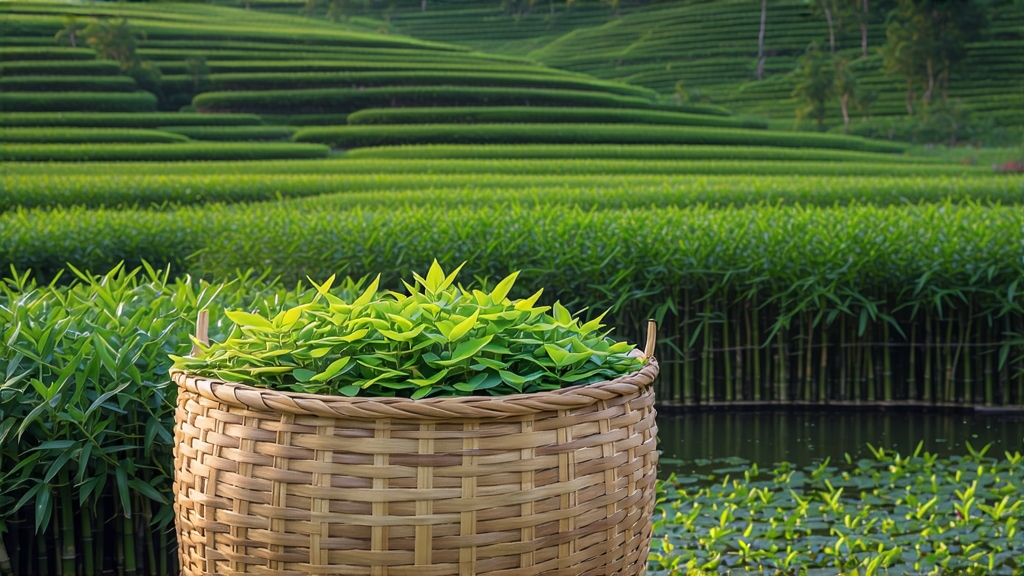
Longjing, literally “Dragon-Well,” is more than a tea; it is a liquid manuscript of Hangzhou’s hills, inked by thirteen centuries of emperors, poets, and gardeners. To the uninitiated it may appear simply green, yet in its flattened, jade-colored blades lies a micro-landscape of soil, mist, and fire. This essay invites the international reader to walk that landscape—from quarry to cup—so that every future sip becomes a dialogue with Chinese history and craftsmanship.
-
Historical echoes
The first credible record dates to the Tang dynasty (618-907), when the West Lake region supplied tribute tea to the court. By the Song (960-1279) the leaves were already pressed into cakes, but the Ming (1368-1644) emperor Hongwu outlawed compressed tea, forcing farmers to perfect the loose-leaf pan-firing technique that defines modern Longjing. Qianlong, the Qing dynasty’s itinerant ruler, visited Hugong Temple near Lion Peak, personally plaved eighteen bushes still marked today as “Imperial Trees.” His travel diaries describe the tea “clear as jade dew, sweet as mountain snow,” cementing Longjing’s mythic status. In 1949 the new People’s Republic designated it the national gift to foreign dignitaries; Nixon’s 1972 cup arguably thawed more ice than diplomacy itself. -
Terroir and taxonomy
Authentic West Lake Longjing occupies barely 1,680 hectares within Zhejiang’s Hangzhou municipality. Four micro-zones matter most: Lion (Shi), Dragon (Long), Cloud (Yun), and Tiger (Hu). Each slope differs in quartz sandstone content, diurnal fog, and reflected lake light, yielding subtle variations: Lion Peak offers chestnut intensity; Dragon village a floral lift; Cloud region a marine salinity; Tiger run a bamboo sweetness. Beyond the lake, Qiantang, Yuezhou, and Xinchang counties produce “Zhejiang Longjing,” pleasant yet lighter, proving that geography is flavor. Cultivar choice further refines identity: the traditional Wuniuzao (“Five-Ox Early”) germinates two weeks ahead of others, while modern hybrids like Longjing #43 yield brighter liquor and frost resistance without sacrificing aroma. -
The choreography of picking
Plucking begins around Qingming (early April) when nights stay cool but days reach 15-20 °C. Only the standard “one bud with one unfolding leaf” (around 2.5 cm) is taken. Experienced pickers finish 3 kg of fresh leaves in a dawn shift; that will shrink to 0.65 kg after firing. Speed matters: within four hours of harvest the cells must be stilled to prevent enzymatic browning. Bamboo baskets, never plastic, allow ventilation and pay homage to an 800-year-old design etched in the Classic of Tea. -
Pan-firing: where chemistry meets kung fu
Longjing belongs to the pan-fired, not steamed, green tea family. Craftspeople work on seasoned cast-iron woks heated in cascades: 90 °C for “kill-green” (shaqing), 60 °C for shaping, 40 °C for final fragrance. Bare hands test the wok; if a drop of water dances like a pearl, the temperature is right. Ten distinct hand motions—tremble, press, stroke, fling—flatten each leaf into the signature “sparrow’s tongue” while coercing grassy volatiles into toasted chestnut aromatics. A master can process 1 kg per hour, but novices scorch or under-cook, proving that machines still cannot replicate fingertip thermometers. The finished leaf retains 3–4 % moisture, locking in jade hue and locking out oxidation. -
Grading lexicon for the global buyer
Chinese commerce uses a matrix of harvest date, leaf integrity, and firing precision. Pre-Qingming (Mingqian) lots, picked before April 5, command the highest prices—often USD 1,000 per 500 g—because the buds are richest in theanine, yielding brothy sweetness. Rain-free days score better; waterlogged leaves dilute flavor. Visually, top grades show flat, smooth blades of uniform 2 cm, pistachio green with a matte finish; overly shiny suggests under-firing, while yellow edges indicate scorching. Aroma should balance fresh fava bean and roasted cashew; any hay note signals stale stock. -
Brewing: the 3 g-3 min-80 °C rule
Western drinkers often overheat